Tour de Partisan
Topics: cycling
Today is the 25th of April, and in Italy it is also specifically Liberation Day. This is not the day of the complete surrender of German and RSI (Salò) forces to the Allies; history is rarely that clean and simple, and this is one holiday the recognizes that messiness. The 25th of April 1945 is the day of the general uprising, but in different cities, it took different amounts of time for that insurrection to work out, so not all of Italy was freed on the 25th itself.
Piacenza in particular saw some very hard fighting, because the Germans, instead of withdrawing, were protecting the crucial crossings of the river Po. On the other side, Piacenza was on the edge of the “Red Triangle” (link in Italian), the area which saw a large number of revenge killings or instances of summary justice by mostly left-leaning partisan forces.
In other words, history is complicated. A family friend would all but spit on the floor at any mention of the Partisans — because her memory of them was as rough men who came down from the mountains and stole her chickens.
On the other other hand, the big story of the day is a good one, so on the 80th anniversary of the Liberation, I got on my bike and went on a pilgrimage of memorials to this complex day.
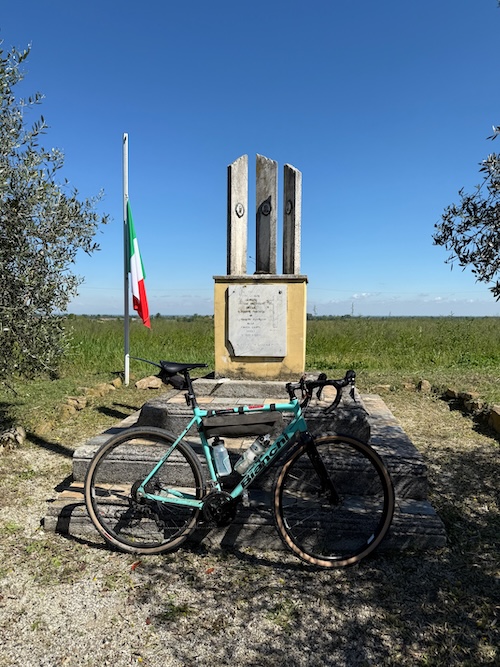
The first monument that I encountered was on the road from Rivalta, in the Trebbia valley, into the valley of the Luretta. This was a crucial line of communication between the Partisan formations of the Trebbia and Tidone valleys, and this monument commemorates a relatively early event of resistance (or Resistance), in December of 1944. The photographs are starting to fade, and the “marble” slab is chipped, but the flag is new, and today, it flies at half mast.
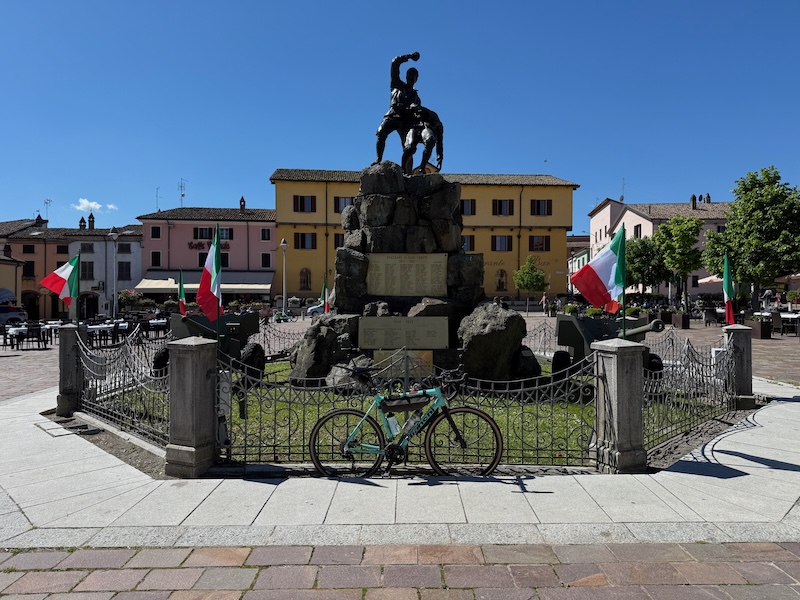
My next stop was in the main square of Agazzano, the major market town and communications choke point of the valley. In terms of a national narrative, this is a complicated monument, combining the fallen of the First World War — in Italy, an uncomplicated national coming-of-age epic — and those of the Second, a far more complex story, especially in light of the third plaque, commemorating those lost in the Italian retreat from Russia. Flanked by (what I am told are) British mountain guns air-dropped to support the Partisans, it is hard to reconcile the different stories told here — except in terms of a small community that repeatedly saw the flower of its youth march off and return years later, if at all, for no locally obvious reason.
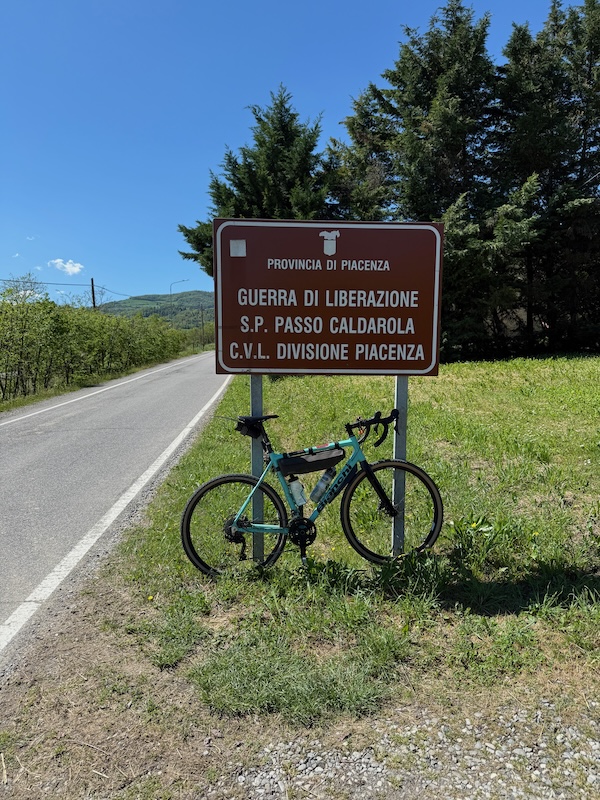
The entire road of the pass of Caldarola, back towards the Trebbia valley, has been renamed to commemorate the efforts of the Partisan forces for Liberation.
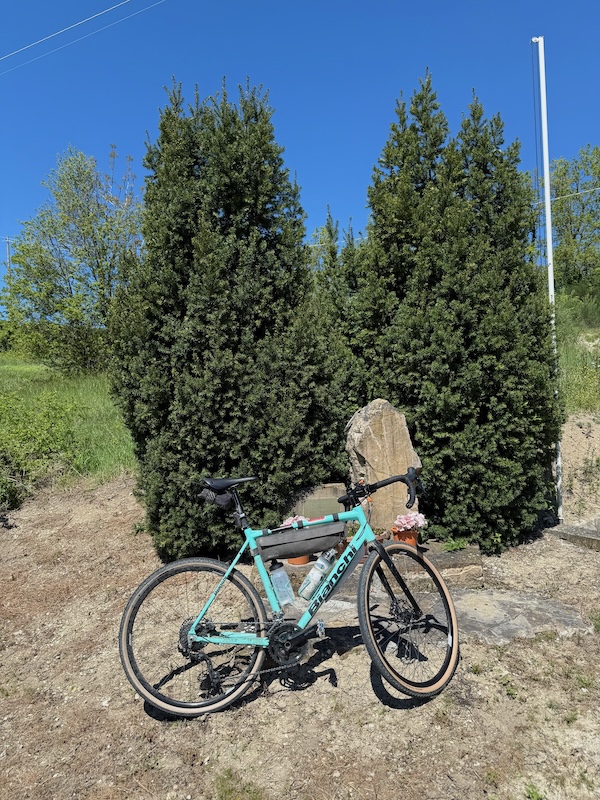
This is still a complicated story, though, as is highlighted by the next monument, which commemorates Carabinieri (a military police force, but one deployed against civilians rather than against soldiers) “fallen in the course of their duties”. In 1944 the suspicion has to be that those duties were on the other side, and while the flowers are fresh, no flag flies here. History is not simple, either when it is happening, or when it is being written down later.
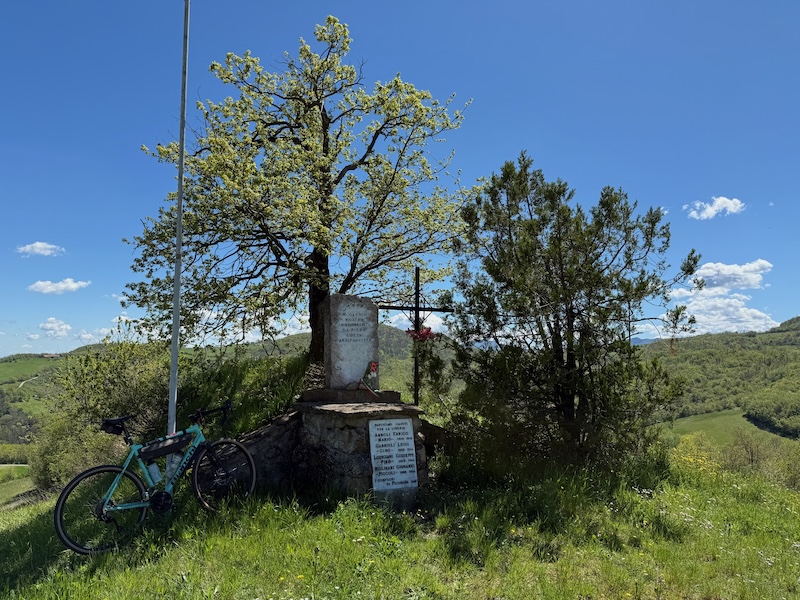
The next monument comes after a long hard climb to the top of the pass. These are explicitly partisans who fell in antifascist combat, commemorated by their comrades. Fresh flowers commemorate them, and while the flag is missing here too, up on the ridgeline I think it might have simply been blown away by the wind.
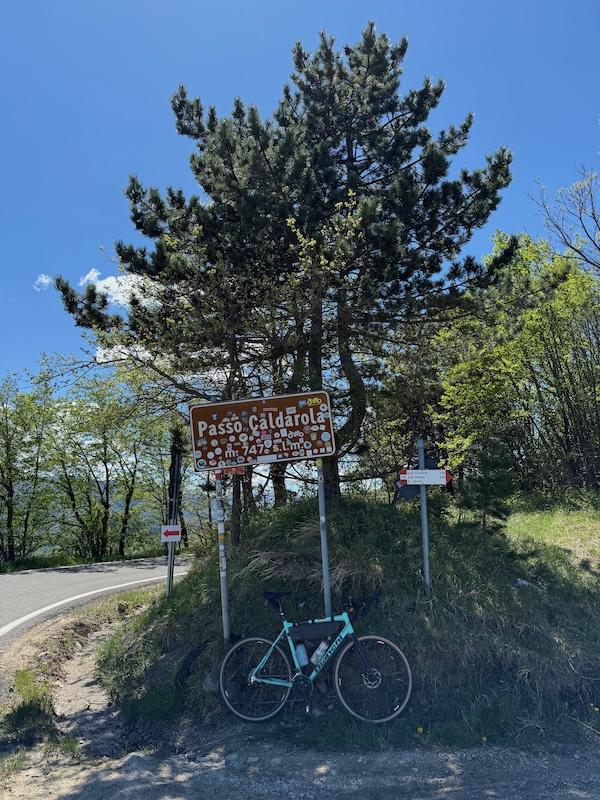
Top of the pass! Much as it was in the 40s, this remains a key communications link between valleys — but these days, it is mostly bikers (motor-, mountain-, or road-) who pass through, and two of those tribes like to leave stickers behind. Better than bullets!
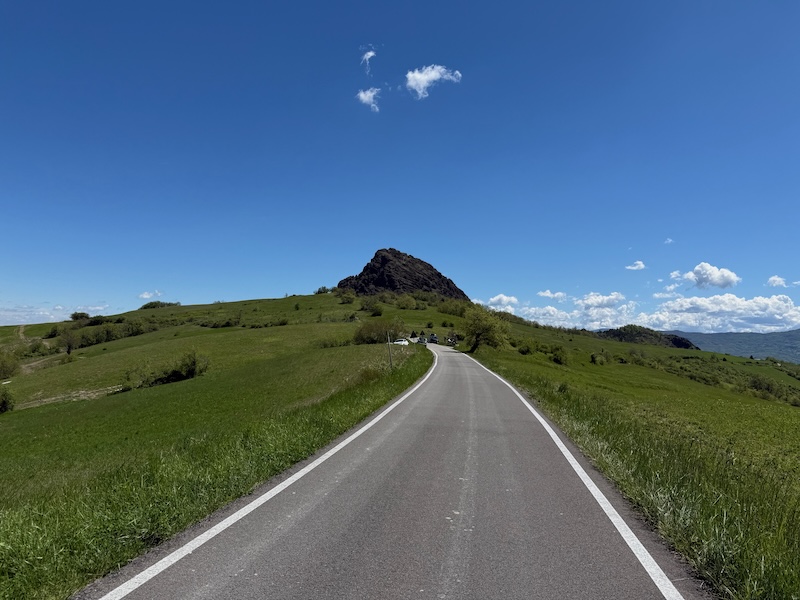
Riding down from the ridgeline towards the Pietra Parcellara, a volcanic outcrop that is a local landmark, and has been for millennia. There is an actual species of salamander only found at the top — a sky island biome.
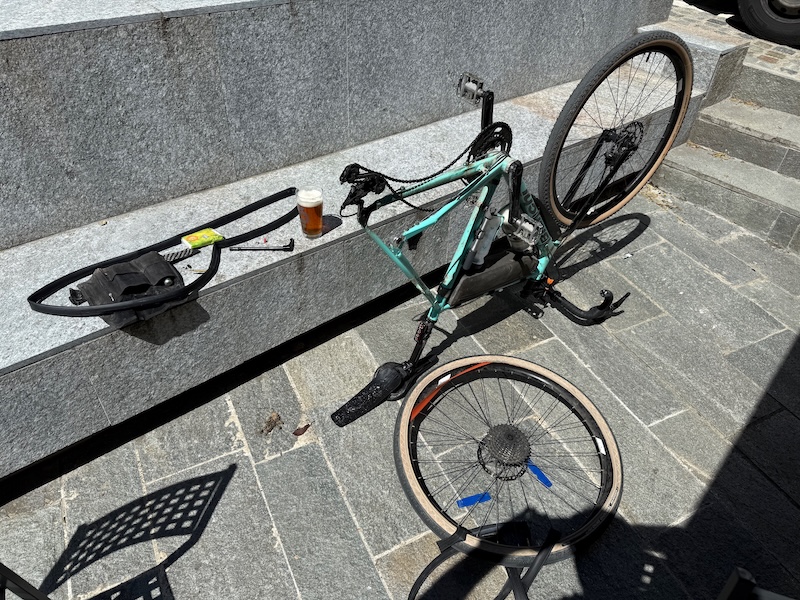
Unfortunately I popped a slow puncture, and though I stopped to pump my tyre up at the top of the pass, by the bottom things were getting distinctly wobbly, so I coasted into Travo, the nearest town, and settled down to change the inner tube.

If you do have to get a puncture, I highly recommend doing so somewhere they will serve you beer and sandwiches; even when I found out that I didn’t have the right adapters for my CO2 cartridge and had to inflate the tyre with a little hand-pump, I hardly used any bad words at all.
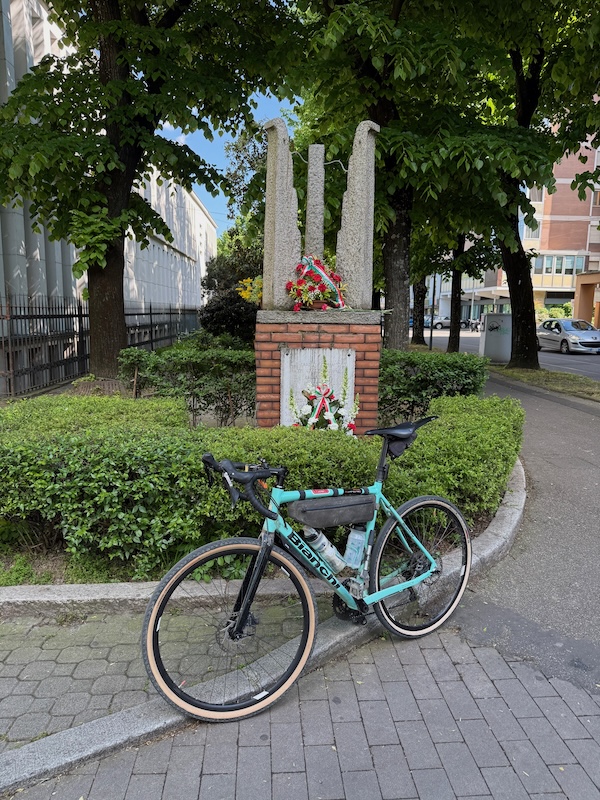
Last stop, almost home, but how better to underline the complexity of history? Literally facing each other across the bike path, we have the monument to the fallen in the fight for Liberation, and that to commemorate those lost in the retreat from Russia.
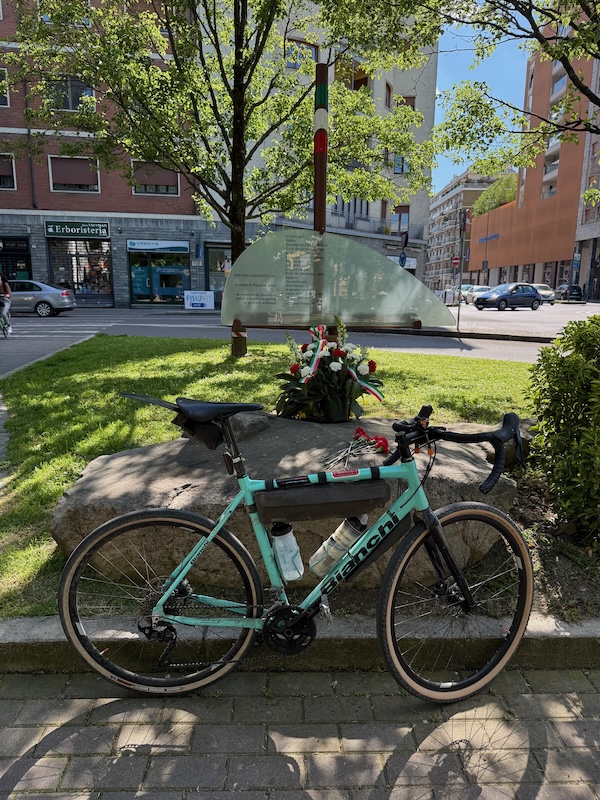
This very spot saw some very hard fighting, with at least some of the dead strafed by Luftwaffe planes that took off from a nearby airbase that went on to host Luftwaffe planes again during the Cold War. The Luftwaffe used to contribute a massive fir tree for the Christmas celebrations in the town square, but since they have pulled out and the airbase has been mothballed, we have had to put up with modernist cones of lights rather than actual trees. So it goes, and if that is the worst we have to deal with, we will be very lucky by historical standards.
To paraphrase that terrible pessimist Orwell, we sleep soundly in our bed because rough men stood ready to do violence on our behalf eighty years ago — and then returned their weapons and went back to their lives, memorable only to them and to their families and friends. Which is exactly as it should be. I am grateful to them, and to the opportunity which their sacrifices afford me to ride my bike into the hills on a beautiful spring morning, and return with nothing more than sore legs and the sort of mild sunburn that comes with the first time skin sees sun since last summer.